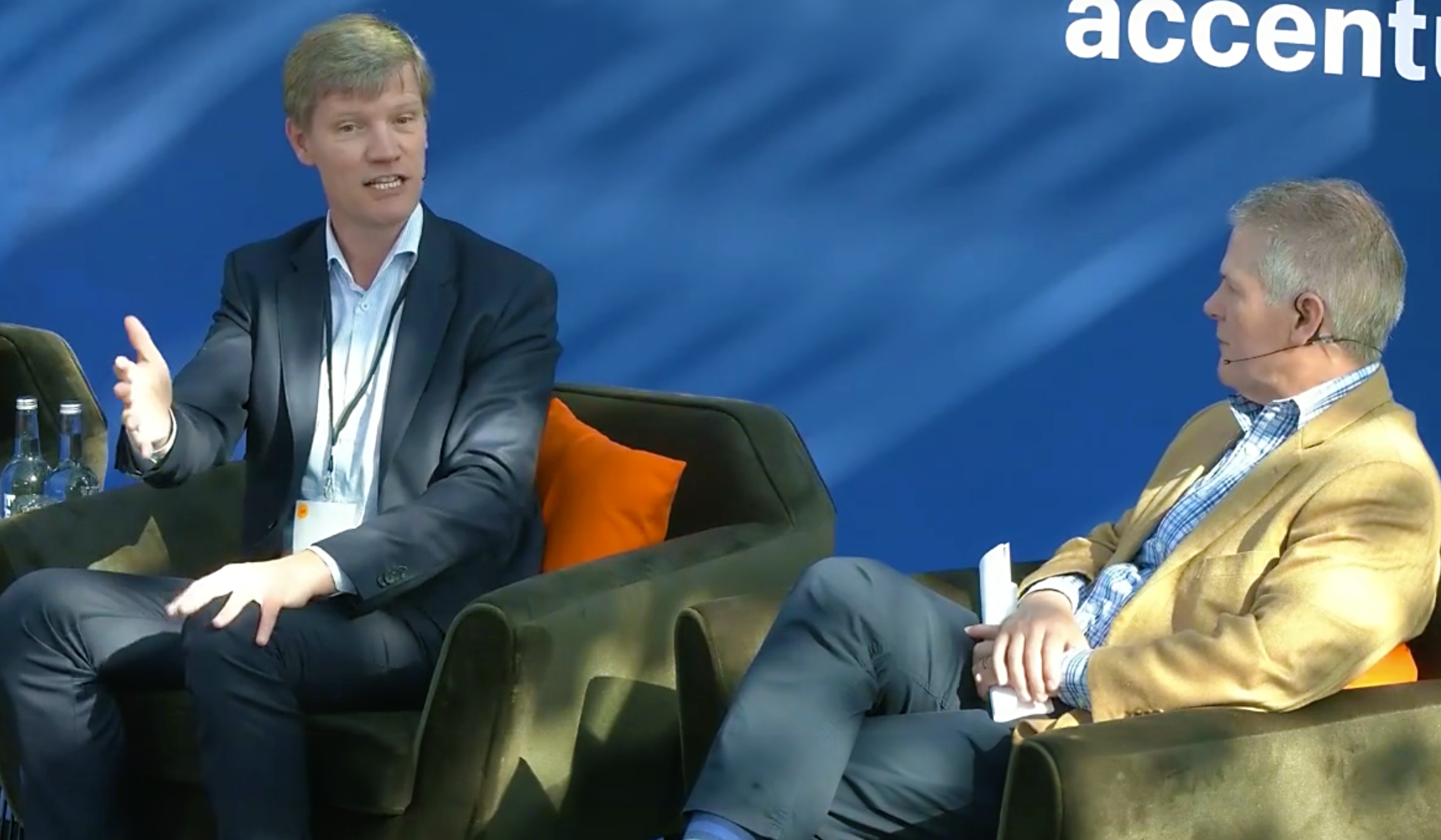The future of Consumer Packaged Goods (CPG) and Food & Beverage (F&B) industries is rapidly changing. We find ourselves at the convergence of AI-driven automation, data integration, and a shift toward autonomous operations.
In a recent webinar with Stefan Vos, Industry X Lead for Consumer Goods Europe at Accenture, we explored how generative AI and digital transformation are not just buzzwords but practical tools reshaping how companies operate. Here’s a few key takeaways from our discussion.
The AI Revolution: Beyond Buzzwords
AI is no longer a distant future concept; it's reshaping operations right now. In our conversation, Stefan emphasized this point: “It’s very clear to our clients that you can only do something meaningful in the Generative AI domain, and scale something, if your data foundation is in place.” This sentiment cuts to the core of the AI conversation in CPG and F&B: AI is only as good as the data it’s built on.
Many companies are experimenting with AI pilots, but as we discussed, the real challenge lies in scaling these innovations. The key is having clean, structured, and integrated data—what Stefan called the "digital core"—which forms the foundation for an intelligent, AI-driven operation. Without this core, you’re stuck in a perpetual MVP phase, unable to unlock the true power of AI.
For IT leaders in consumer products, this means stepping up data management practices. The goal is to move from reactive data usage—where companies struggle to piece together fragmented information—to proactive, even predictive, data usage. This requires breaking down silos between departments and consolidating disparate data sources into one unified platform.
Data: The Fuel for AI-Driven Insights
Data is the new oil, but only if it’s refined. The fragmentation of data remains a massive hurdle for CPG companies. As Stefan mentioned, “If you look at the product innovation space, this is an area where the large CPG companies are really stepping up and moving towards an end-to-end digital thread—from the formulation center to the production line—and solving for that siloed and fragmented process.”
This digital thread connects the entire product lifecycle, from concept to consumer, eliminating the manual processes that slow innovation. It’s astonishing how often clients are manually pulling data from one system, reworking it in Excel, and re-entering it elsewhere. Stefan hit the nail on the head when he remarked, “If we think of the product innovation process, we think PLM, everything is sorted out. But then you do the analysis and you see how many times people pull something out, put it in an Excel sheet, reprocess it, bring it back in.”
Imagine the operational efficiencies gained by transitioning to a fully digital thread, where data is instantly accessible and actionable at every step of the product journey. By harnessing this data, companies can streamline operations, speed up time-to-market, and—most importantly—get it right the first time.
Automating Workflows: AI as a Co-Pilot
We’re also entering a future where AI will act as a co-pilot for every employee. “You can soon imagine a world where each individual will have an AI agent or companion with them,” said Stefan, “freeing up a significant amount of time.” This isn't about replacing jobs; it's about augmenting human capabilities.
This point was echoed at our recent Veeva Consumer Products EU Summit, where Matthieu Cassier, Research & Innovation Chief Digital Transformation Officer at L’Oréal, said, “For people, for scientists, we want technology to do three things: one is to make their life easier…like finding your document, all those types of very basic things. Second one is how much do we amplify their innovation expertise. And third is how much we help them to make a good decision.”
Take quality management, for example. AI-driven agents can detect trends in customer complaints or manufacturing defects far quicker than humans. As Stefan pointed out, “If I think of quality data, say customer complaints that you capture around the world, the agent will pick up trends much faster than a human.” AI’s ability to detect these patterns allows for quicker corrective actions and preventative measures, significantly improving product quality and customer satisfaction.
For IT leaders, the focus should be on deploying AI in ways that enhance decision-making, rather than replacing it. Whether it’s detecting trends in quality data, automating routine tasks, or flagging potential issues before they escalate, AI serves as a valuable partner in day-to-day operations, particularly for repetitive tasks.
This shift toward a robust digital core sets the stage for more autonomous operations. Imagine a factory where AI agents continuously monitor and adjust production processes without human intervention. While we’re not quite there yet, companies are already beginning to automate significant portions of their operations, moving closer to this reality.
The Future is Now
For IT leaders in CPG and F&B, the future is no longer a distant vision—it’s here, and it’s powered by AI. But as Stefan and I discussed, scaling AI’s benefits requires a solid digital foundation. Companies need to clean and unify their data, eliminate manual processes, and invest in platforms that enable real-time decision-making.
The benefits are clear: faster product innovation, improved quality management, and more autonomous operations. But the first step is always the same—strengthen your digital core, because without it, AI remains just a buzzword.
If you’re ready to dive deeper into how AI and digital transformation are reshaping the industry, I encourage you to watch the full webinar on demand. There, you’ll get more insights from Stefan Vos and myself on how to unlock the full potential of AI in your organization.
SHARE






